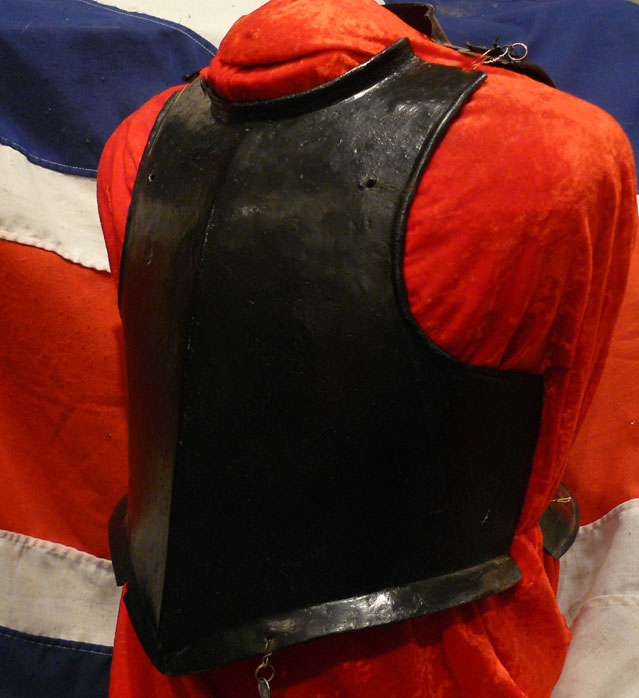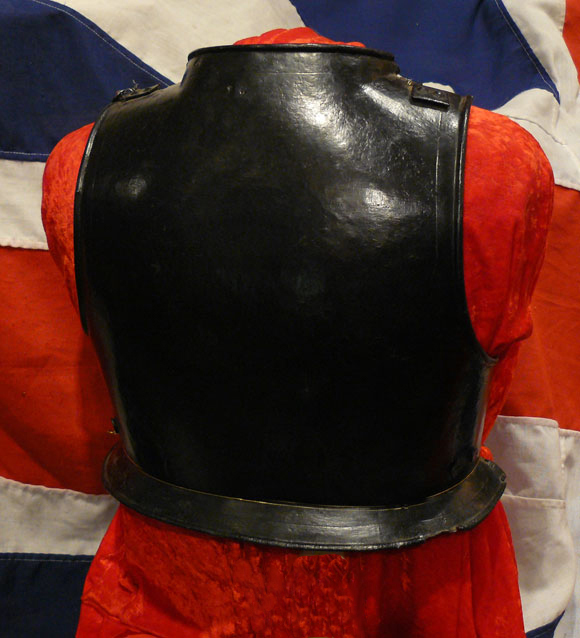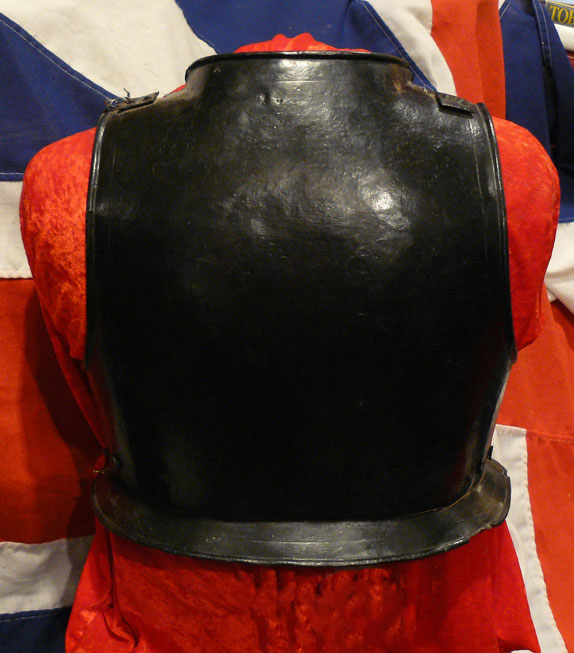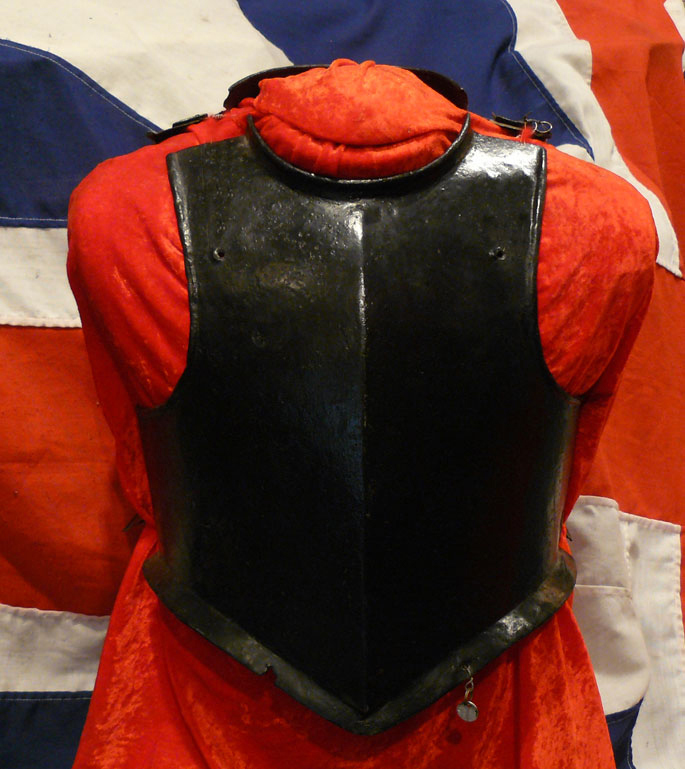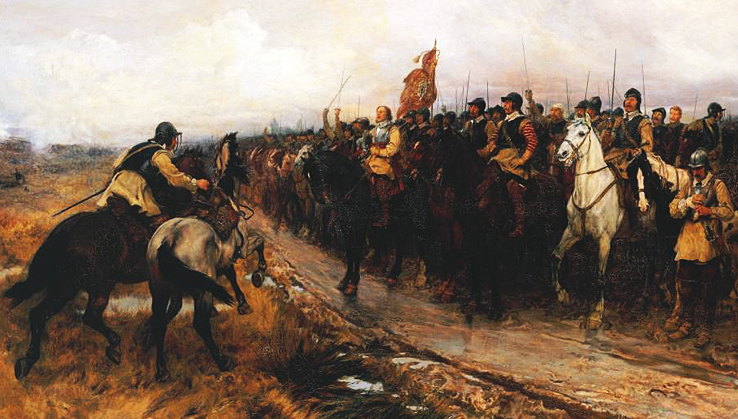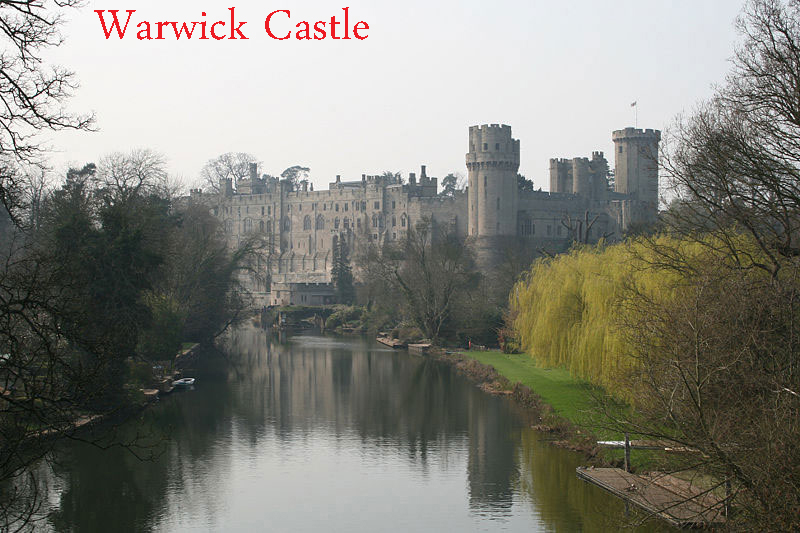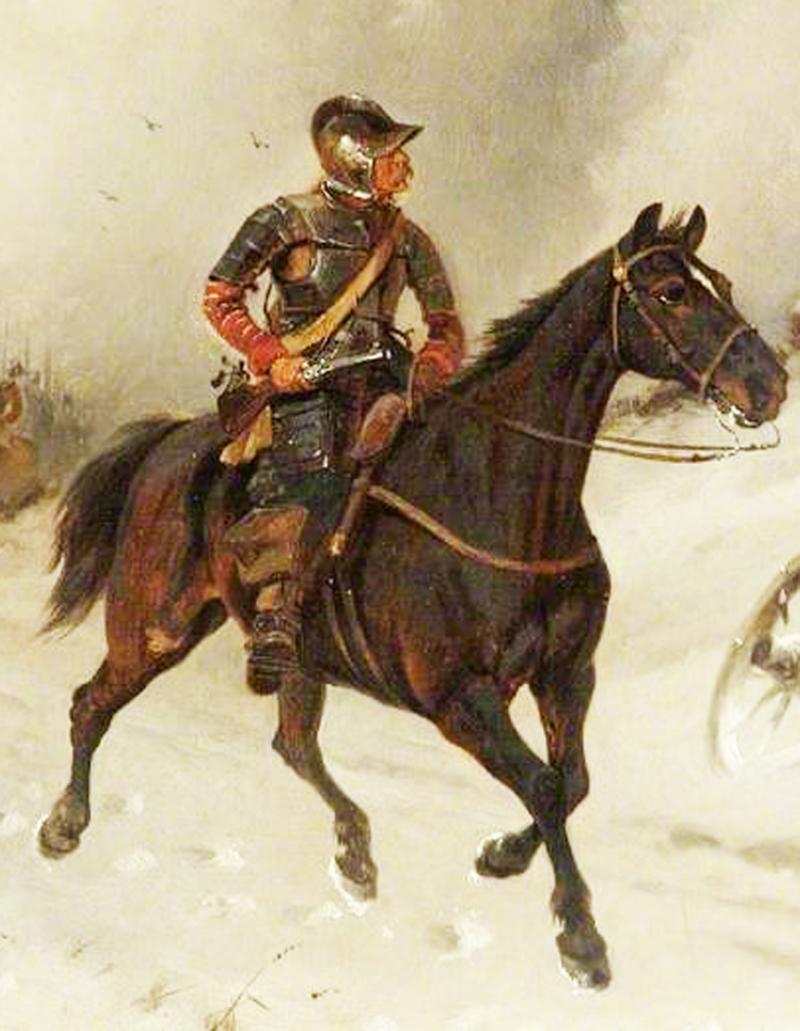Fine Original English Civil War Cavalryman's Cuirass, Front Plate and Back Plate Armour, Formerly From the Fabulous 'Warwick Castle Collection', The Warwick Castle Armoury From The Time Of The Siege of The Castle During the English Civil War
A very fine original English Civil War New Model Army cavalry trooper's cuirass direct from the Armoury of Britain's greatest medieval castle, Warwick Castle. Possibly the very best full Civil War armour cuirass to come onto the market in 50 years. As good as the very best example in the British Royal Collection.
It was sold to assist the restoration of the great hall at the castle. This breast plate still has the Warwick castle armoury inventory metal tag still affixed to it. The breast plate has fine Civil War period armourer's marks of the London Armourers Company *see below of the 'A' mark for the Commonwealth, and also the helmet mark to the back plate. During the Civil War the Castle was besieged by the Royalists, they failed in their endeavours and they were captured and incarcerated within the castle dungeons. It most likely possible this armour was used in this conflict and placed in the armoury at the castle and remained there ever since until we bought it. William the Conqueror ordered the start of the building of Warwick in the 11th century, and by the 14th century the great Towers were completed. We consider ourselves very fortunate to have the opportunity to acquire some wonderful arms and weaponry from a small disposal from the Castle Armoury, in order to benefit the restoration of the Castle. In the year 1264, the castle was seized by the forces of Simon de Montfort, who consequently imprisoned the then current Earl, William Mauduit, and his Countess at Kenilworth (who were supporters of the king and loyals to the barons) until a ransom was paid. After the death of William Mauduit, the title and castle were passed to William de Beauchamp. Following the death of William de Beauchamp, Warwick Castle subsequently passed through seven generations of the Beauchamp family, who over the next 180 years were responsible for the majority of the additions made to Warwick Castle. After the death of the last direct-line Beauchamp, Anne, the title of Earl of Warwick, as well as the castle, passed to Richard Neville ("the Kingmaker"), who married the sister of the last Earl (Warwick was unusual in that the earldom could be inherited through the female line). Warwick Castle then passed from Neville to his son-in-law (and brother of Edward IV of England), George Plantagenet, and shortly before the Duke's death, to his son, Edward. Several Kings owned Warwick including King Henry VIIth, and Henry VIIIth, James Ist, and also Queen Elizabeth.* In 1322, in the reign of King Edward II, the Guild of St George of the Armourers was instituted, by ordinance of the City of London, which laid down regulations for the control of the trade. King Henry VI presented the Armourers with their first Royal Charter in May 1453. The New Model Army's elite troops were its Regiments of Horse. They were armed and equipped in the style known at the time as harquebusiers, rather than as heavily armoured cuirassiers. They wore a back-and-front breastplate over a buff leather coat, which itself gave some protection against sword cuts, and normally a "lobster-tailed pot" helmet with a movable three-barred visor, and a bridle gauntlet on the left hand. The sleeves of the buff coats were often decorated with strips of braid, which may have been arranged in a regimental pattern. Leather "bucket-topped" riding boots gave some protection to the legs.
Regiments were organised into six troops, of one hundred troopers plus officers, non-commissioned officers and specialists (drummers, farriers etc.). Each troop had its own standard, 2 feet (61 cm) square. On the battlefield, a regiment was normally formed as two "divisions" of three troops, one commanded by the regiment's Colonel (or the Major, if the Colonel was not present), the other by the Lieutenant Colonel.
Their discipline was markedly superior to that of their Royalist counterparts. Cromwell specifically forbade his men to gallop after a fleeing enemy, but demanded they hold the battlefield. This meant that the New Model cavalry could charge, break an enemy force, regroup and charge again at another objective. On the other hand, when required to pursue, they did so relentlessly, not breaking ranks to loot abandoned enemy baggage as Royalist horse often did
One picture in the gallery shows Warwick Castle today for information only, not included
Code: 21825
4750.00 GBP


